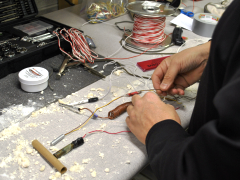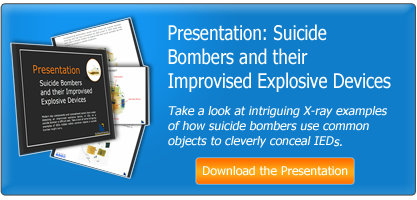 It seems like over the past fifteen years, we’ve heard a lot about the Improvised Explosive Device, otherwise known as IED. An IED is a homemade or noncommercial explosive device used to cause pain and mass destruction. It has been a prominent threat tactic used largely by terrorists in package, suicide, car, and roadside bombs to target both soldiers and civilians.
It seems like over the past fifteen years, we’ve heard a lot about the Improvised Explosive Device, otherwise known as IED. An IED is a homemade or noncommercial explosive device used to cause pain and mass destruction. It has been a prominent threat tactic used largely by terrorists in package, suicide, car, and roadside bombs to target both soldiers and civilians.
Despite recent media spotlight on these IED attacks in the past few decades, you might be surprised to learn these were originally devised over a century ago. Since then, the terminology has changed and the device itself has evolved, but the core concept of the Improvise Explosive Device remains the same.
Early History
Improvised Explosive Devices were originally termed explosive booby traps in the mid 1800s to early 1900s. Their purpose was to cause casualties, delay opposing forces, and alert of approaching enemies.
Explosive booby traps commonly consisted of large amounts of black powder in a container connected to a system used to ignite it. Detonation could be triggered by press, pull, or release mechanisms hidden in or under ordinary objects.
 IEDs grew increasingly popular over time and were used in many wars, including World War I and II. Land torpedoes or landmines are an example of explosive booby traps used at this time. They usually consisted of an iron container rigged with gunpowder, a fuse, and a brass detonator. These underground devices set off when activated via pressure or trip wire. Underground explosive booby traps were also rigged to seemingly ordinary objects such as knives connected to pull cords to activate the explosive.
IEDs grew increasingly popular over time and were used in many wars, including World War I and II. Land torpedoes or landmines are an example of explosive booby traps used at this time. They usually consisted of an iron container rigged with gunpowder, a fuse, and a brass detonator. These underground devices set off when activated via pressure or trip wire. Underground explosive booby traps were also rigged to seemingly ordinary objects such as knives connected to pull cords to activate the explosive.
IED components at this time were fairly large and rigid. Components were costly or difficult to get a hold of which limited their design. Early explosive devices and tactics were fairly simple and rudimentary, but they served their purpose well.
IED Evolution
By the second half of the twentieth century, common household items were being used more and more in place of bulky, military-type materials. As a result, the creativity for building IEDs increased exponentially with endless ways to develop, assemble, and detonate them.
IEDs came in many forms from simple to very intricate and small to extremely large. Their design was only limited to the imagination of its creator. Because of that, these devices were not only physical weapons, but developed into psychological weapons.
It wasn’t until the 2000s that the terminology Improvised Explosive Device became known worldwide. Growing media coverage of the wars in Iraq and Afghanistan popularized the term as insurgents and terrorists frequently used IEDs to bring attention to their cause.
 Today’s Improvised Explosive Devices can be created and assembled using commonly available materials purchase anywhere, including local stores and online, and are inexpensive to produce. IED components are easier to obtain than before and simple to mold or fit anywhere the designer intends to use it.
Today’s Improvised Explosive Devices can be created and assembled using commonly available materials purchase anywhere, including local stores and online, and are inexpensive to produce. IED components are easier to obtain than before and simple to mold or fit anywhere the designer intends to use it.
IEDs can be electronically programmed to trigger automatically at a later time, when certain conditions are met, or remotely. They can be cleverly constructed with elements that are difficult to detect such as non-metallic components. Devices can also be enhanced with extra materials to increase the explosion's impact using shrapnel and hazardous materials.
IED placement tactics have also expanded beyond concealment underground. Concealment tactics have improved drastically and devices are commonly hidden in packages, vehicles, and on suicide bombers. There are so many variations of the IED and the damage it can cause depends on the combination of size, materials, construction, and placement.
Counter-IED Efforts
 Security and defense sectors all around the world have made countering the IED a prime focus. Many organizations are using C-IED tactics and training to provide the skills, techniques, and procedures necessary to counteract Improvised Explosive Devices.
Security and defense sectors all around the world have made countering the IED a prime focus. Many organizations are using C-IED tactics and training to provide the skills, techniques, and procedures necessary to counteract Improvised Explosive Devices.
Training security screeners and military personnel on IED recognition is imperative. This includes understanding IED components, recognizing suspicious activities, using detection equipment, and keeping up with the latest threats and concealment techniques.
What kind of C-IED training do you employ at your company? Let us know in the comments section.

